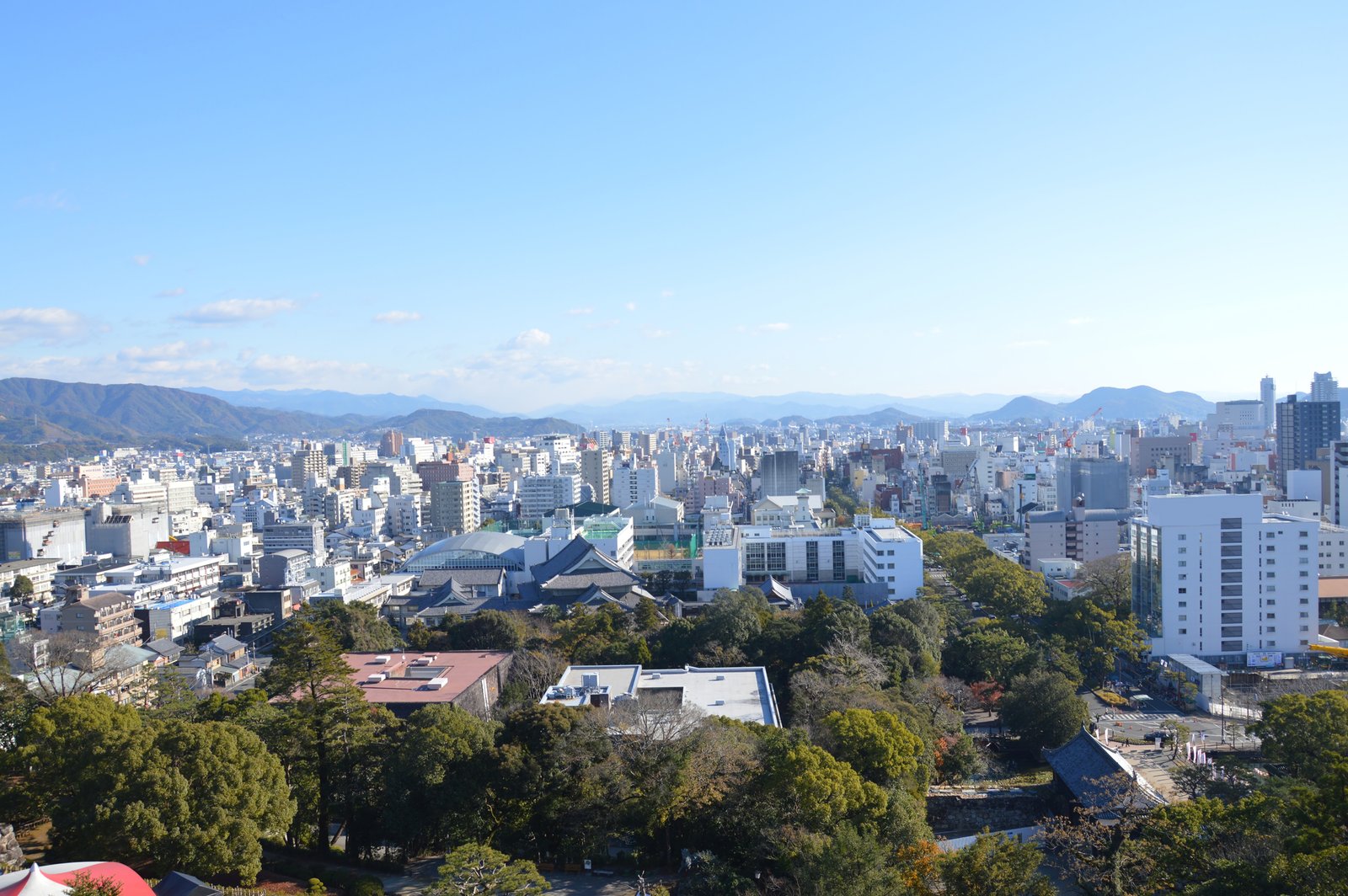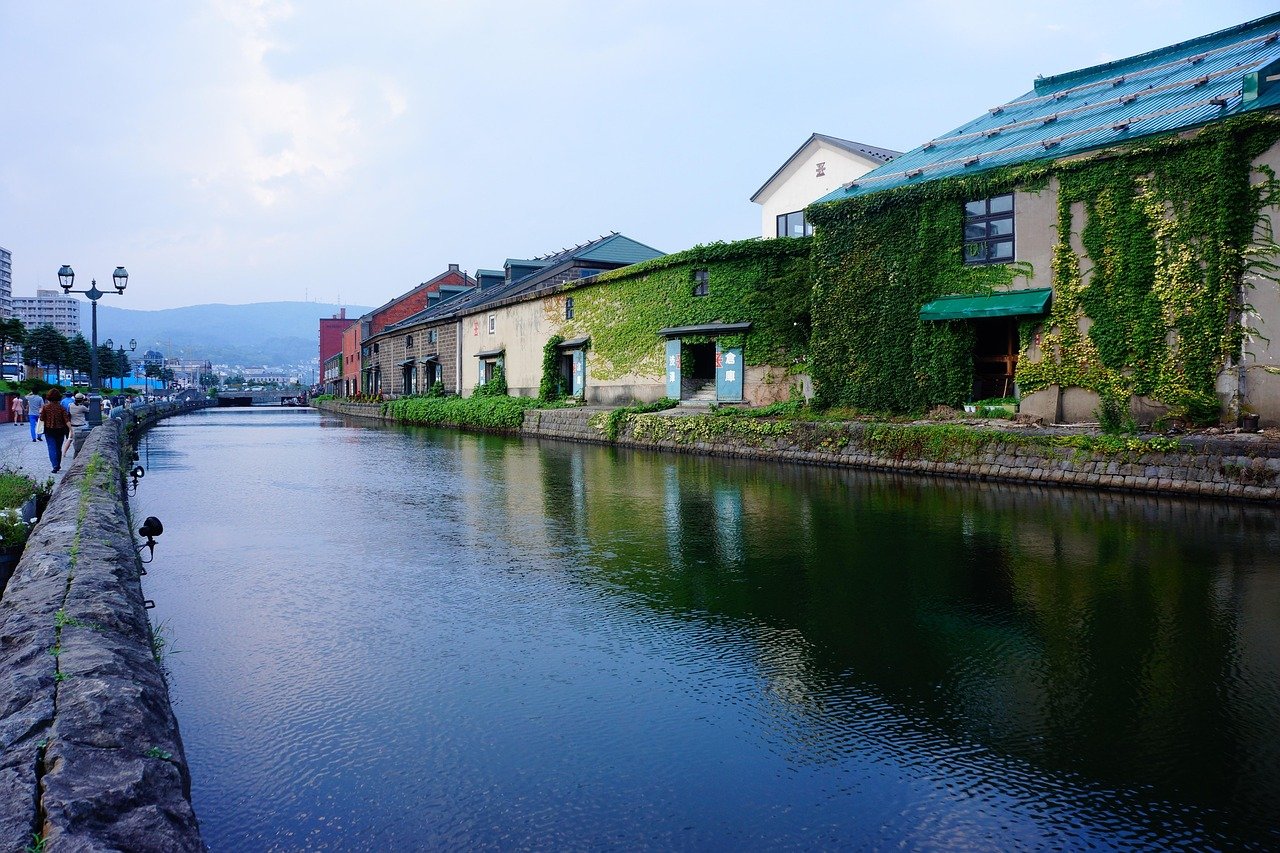Your journey to Niigata begins with the golden rice fields. They stretch across the countryside, showing the soul of this Japanese rice heartland. If you love exploring food traditions, this culinary tour of Niigata will show you more than just fields. It reveals a culture that values life’s simplest yet most profound ingredient.
Niigata sits where the Sea of Japan meets mountains. Its identity as a Japanese rice region is ties to its role as a dining spot. Every grain of Koshihikari rice has a story of volcanic soil and crisp winds. These flavors are found in dishes from sushi to hot pots.
A gastronomic journey in this city means enjoying miso-basted salmon by riverside or tracing the aroma of fresh rice in family taverns. Here, food isn’t just about taste. It’s a celebration of seasonality, artisanal pride, and turning earth’s bounty into moments of joy.
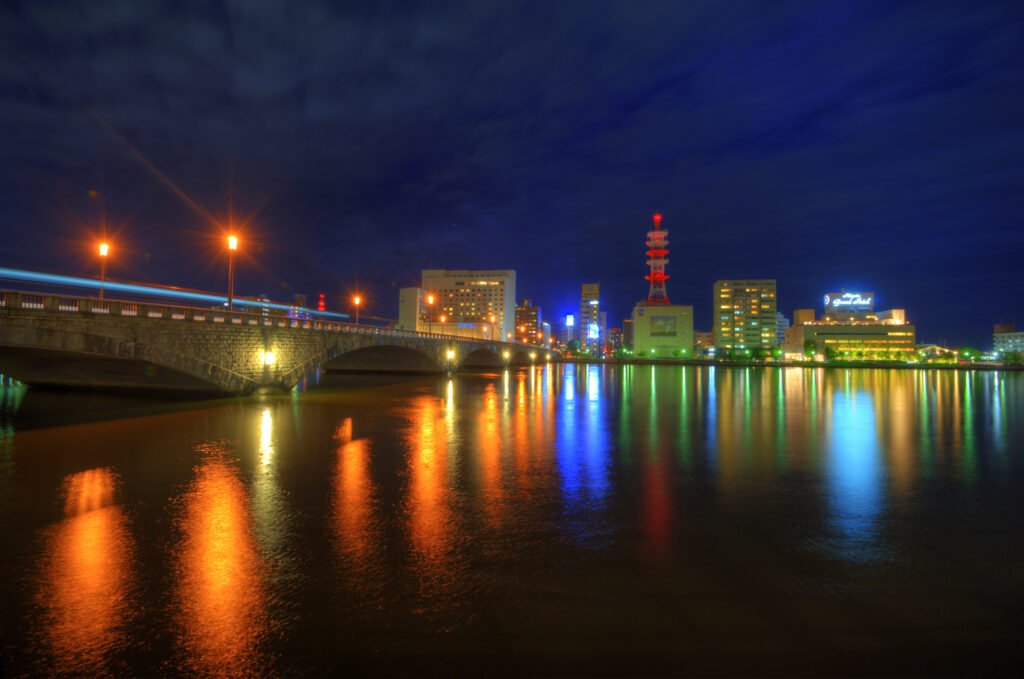
The View Of Bandai Bridge At Niigata City, Japan.
Key Takeaways
- City’s rice legacy shapes its entire culinary identity, from paddies to plates.
- The prefecture offers immersive food tourism experiences connecting diners to farmers and chefs.
- Its coastal and mountainous terrain creates a unique fusion of seafood, sake, and heritage grains.
- Visitors discover how tradition and innovation coexist in Niigata’s modern kitchens.
- Every bite here tells a story of place, season, and the hands that craft its flavors.
Why Niigata Stands as Japan’s Rice Capital
Walking through city’s terraced paddies, you feel the heartbeat of a region where land and tradition fuse. The secrets behind its dominance in Japanese rice farming unfold in three pillars: nature’s gifts, a legendary grain, and unbroken heritage.
The Perfect Climate and Geography for Rice Cultivation
Snowy winters blanket the fields, purging pests and enriching soil. Mountain rivers cascade into irrigation channels, their meltwater feeding rice cultivation with mineral-rich purity. You watch farmers trace waterways by hand, honoring a balance of sun, soil, and snow that no other region replicates.
Koshihikari: The Crown Jewel of Japanese Rice
At a harvest festival, a farmer scoops a handful of grain into your palm, Koshihikari rice. Its translucent sheen promises perfection. Cooked, it melts on your tongue: a symphony of floral sweetness and chewy resilience. Chefs across Japan seek out this grain, calling it the premium rice that defines fine dining.
Centuries of Rice-Growing Traditions
Old farmers chant proverbs as they transplant seedlings by hand, a ritual passed down for centuries. Their methods spacing plants precisely, using wooden tools, preserve flavors untouched by shortcuts. This reverence for time-honored craft ensures city’s rice remains a living heirloom, not just a crop.
The Distinctive Flavors of Niigata Cuisine
Walking into a market, you’re greeted by the smell of steamed Koshihikari rice and fresh seafood. The regional cuisine is all about balance, where the earth meets the sea. Your first taste of authentic Niigata dishes shows you their belief in letting food speak for itself.
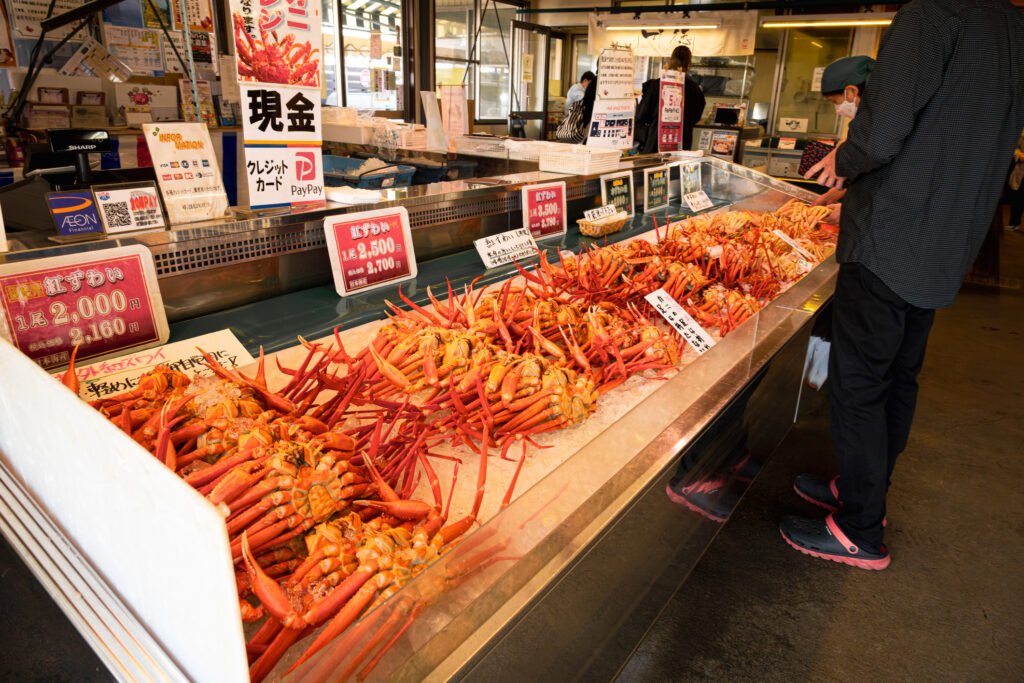
Stall Inside Of Minato Marche Pier Bandai Selling Crabs In Niigata, Japan – Nov 11, 2024
- Noppe: A cozy vegetable stew cooked in clay pots, it brings out the natural flavors of local veggies.
- Wappameshi: A dish with flaky rice, fresh sardines, and bamboo shoots, all steamed in cedar boxes for a unique aroma.
- Sasadango: Sweet rice cakes wrapped in bamboo leaves, they offer a contrast of earthy and sweet flavors.
| Niigata Flavor Profile | Other Regions |
|---|---|
| Umami-forward, minimalist seasoning | Richer sauces, complex spice blends |
| Emphasis on seasonal terroir | Year-round availability of non-local ingredients |
Local chefs say their Niigata flavor profile comes from “never hiding the true taste of ingredients,” as a sushi master shares. Even in dishes like traditional Japanese food such as *sashimi* with Sea of Japan fluke, freshness is key. Every meal here is like a dialogue between land, sea, and tradition.
Your Personal Culinary Tour of Niigata: A Foodie’s Journey
Entering city’s culinary scene feels like starting a story you always want to read. Your adventure through this region’s tastes begins with simple yet deep experiences. From the first bite of Koshihikari rice, you’ll know this is more than a food tour.
Every dish here shares a story of land, tradition, and the people who care for them.
First Impressions of Regional Dishes
Niigata’s simple dishes open your eyes. At a riverside izakaya, you have miso katsu, a crispy pork cutlet in a soy batter. The broth’s warmth and the soy’s depth are amazing.
Even ude no nabe (boiled river eel stew) surprises you with its smoky taste. It shows city’s food is all about detail.
Unexpected Delicacies That Capture Your Palate
It’s the surprises that really stay with you. A funori seaweed salad at a coastal stall is tangy and unique. Later, hegi soba noodles with dried seaweed offer a briny delight.
These hidden gems make your tour unforgettable.
Meeting the Local Food Artisans
Niigata’s artisans are its heart. At Miyamoto Sake Brewery, Hiroshi shows you how snowmelt waters make their sake. Mrs. Tanaka of Sakata Miso teaches you about miso with yuzu.
Their stories shows how city’s artisans turn tradition into art.
| Artisan | Craft |
|---|---|
| Miyamoto Brewery | Sake using snowmelt water |
| Sakata Miso | Hand-aged miso with citrus |
| Yamamoto Farm | Organic Koshihikari rice cultivation |
Beyond Rice: Niigata’s Seafood Excellence
City’s coastal waters add a new layer of magic to its cuisine. The Sea of Japan fish here are known for their purity and taste. As you explore, you find that fresh fish is key in Japanese coastal cuisine.
From morning markets to kitchens, it’s a big deal. Cold waters make it perfect for fish like nodoguro and amaebi. This makes seafood a symbol of pride.
Fresh Catches from the Sea of Japan
At dawn, the ports are alive with boats. Fishermen hand you a nodoguro, its flesh soft and rich. The Sea of Japan fish are caught in a way that’s gentle for the sea.
Amaebi’s sweetness and snow crab’s umami are treasures. They show the region’s love for food. In markets, fresh fish shine under the morning sun.
Signature Seafood Preparations Worth Seeking Out
Local chefs make dishes that let the ingredients shine. Try:
- Ama-zuzuke: Sweet vinegar-marinated fish, tangy yet delicate
- Broiled fish collars drizzled with local sake reduction
- Kaisendon: Artfully arranged Niigata seafood atop Koshihikari rice
Pair these with local sakes for the best taste. For something new, try pan-seared dishes that mix old and new.
| Dish | Ingredients | Best Locations |
|---|---|---|
| Ama-zuzuke | Pickled fish, yuzu, local shiso | Portside eateries in Sakaiminato |
| Broiled Collars | Sea salt, miso glaze | Coastal izakayas |
| Kaisendon | Fresh sashimi, nori, truffle oil | Harutori Market stalls |
Every bite tells a story of place and craft. It shows city’s lasting love for food.
Sake: The Spiritual Partner to Niigata’s Rice
Walking through city’s oldest sake breweries, you feel the quiet pride of artisans. They craft premium Japanese sake from the same pristine rice that defines the region. The icy winters and mineral-rich water blend with centuries-old techniques to create a drink as pure as the snowflakes.
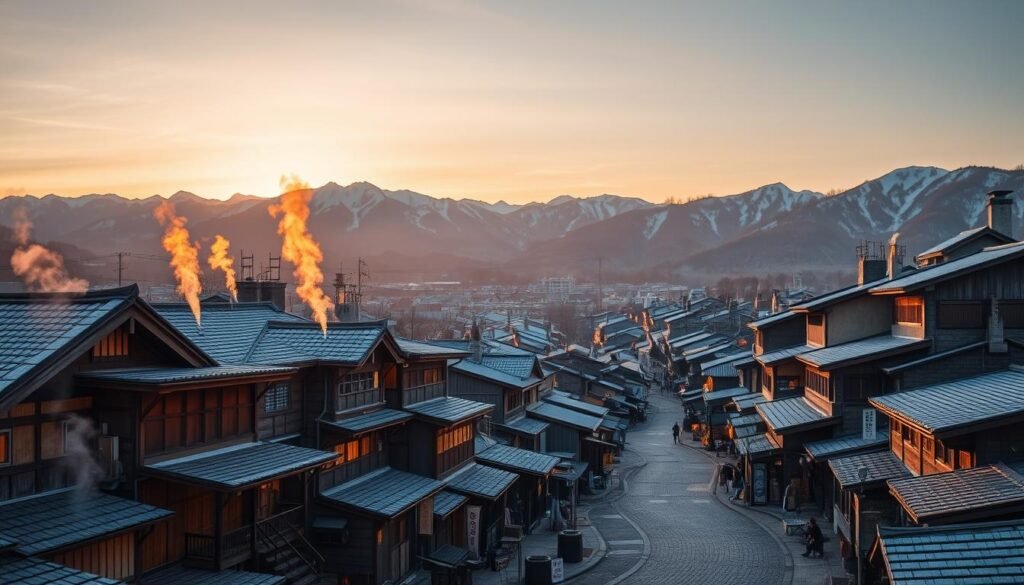
Rice wine production in this city is a dance between nature and patience. Brewers at Hakkaisan and Kubota ferment batches in stone warehouses. They rely on the cold to slow fermentation, giving their sakes a crystalline clarity.
Each sip of their junmai or daiginjo styles whispers of jasmine, pear, and a mineral edge. This is a direct echo of the region’s soil and skies.
Sake tasting Niigata offers revelations. At tiny family-owned kura, you trace how water sources and milling ratios shape distinct profiles. A master brewer explains,
“Our rice’s starch core is our canvas; the rest is just physics.”
His words linger as you compare a bold, earthy draft from winter batches against a summer-pressed lot bursting with apricot sweetness.
These liquid chronicles of city’s seasons aren’t mere drinks, they’re dialogues between tradition and terroir. Sipping at dusk on a mountainside, you realize: the same reverence for purity in rice fields flows into every drop of its sake. It becomes not just a beverage, but a cultural covenant.
Farm-to-Table Experiences That Define Niigata
Exploring city’s fields and kitchens is like tasting the land itself. Your adventure begins at dawn in a rice paddy. There, you learn to transplant seedlings with care. Its a ritual that’s both vital and calming. These Niigata farm experiences allow visitors to touch the soil that grows Japan’s most cherished grain.
Harvesting Adventures for Visitors
From April’s planting to autumn’s harvest, each season teaches you something new. You help farmers pick wild mugwort and shiso, their scents blending with the mountain air. In Uonuma Valley, you pick cherries so juicy they explode in your mouth, a summer delight. Agricultural tourism in this city is more than just looking around. It’s becoming part of the land’s rhythm.
Local Markets That Showcase Regional Bounty
City’s Central Wholesale Market is full of fresh sea bream and snow crab. But it’s the rural markets that create deeper connections. At the Ojiya morning market, you meet vendors who share heirloom vegetables with you. They explain how each vegetable’s shape tells a story of harsh winters and rich soils. Plan your market visits with local guides to find the season’s best.
Cooking Classes That Reveal Traditional Techniques
In a bright farmhouse kitchen, you learn to make mochi rice dough, your arms tired but your senses awake. Japanese cooking classes here teach you patience. You learn to steam Koshihikari rice until it shines, or ferment miso in cedar vats that are decades old. These lessons turn meals into family treasures.
“The land speaks through its flavors,” says one instructor, as you taste pickled plums made with snowmelt. “Listen, and you’ll never see food the same way.”
Every experience here is a piece of city’s food story. A call to enjoy not just the food, but the journey it took to get here.
Seasonal Eating: How Niigata’s Cuisine Changes Throughout the Year
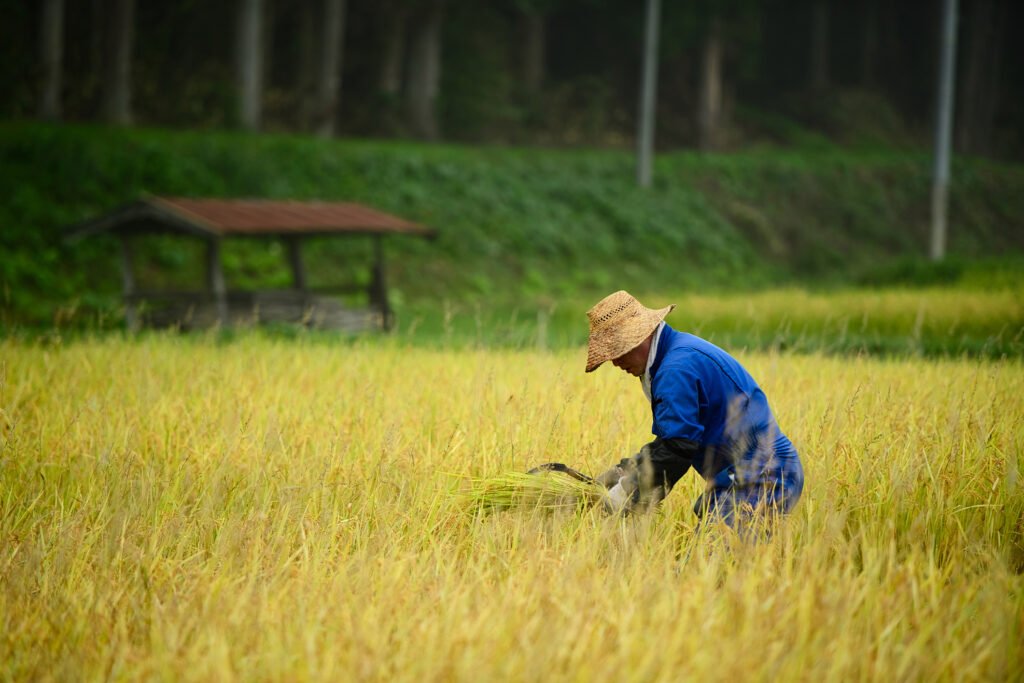
A Japanese Farmer Wearing A Blue Dress And A Wicker Hat, Harvesting Rice In A Field, Rice Plants In Golden Yellow In Rural Niigata Prefecture, Japan
In this city, the seasons are more than just a setting. They are the rhythm of the seasonal Japanese cuisine. You see how chefs and farmers work together, making the food calendar come alive. Each visit feels like tasting the seasons themselves.
Winter brings preserved Japanese seasonal ingredients like pickled radishes. Spring introduces delicate fiddlehead ferns steamed in bamboo.
“The earth speaks to us. We listen,” says Chef Sato during a autumn harvest dinner. His words echo as you sample chestnut-stuffed tofu simmeres in autumn’s first chestnut broth.
- Spring: Mountain vegetables (sansai) emerge, showcased in delicate tempura or miso-marinated dishes.
- Summer: Rivers brim with sweetfish, grilled simply to highlight their fleeting seasonal peak.
- Autumn: Newly harvested Koshihikari rice pairs with matsutake mushrooms in velvety hotpots.
- Winter: Hearth-fired stews and preserved vegetables embody resilience against the cold.
This cycle of plenty and scarcity reflects the idea of shun. It’s about celebrating ingredients at their best. To truly experience city’s culinary heart, you must taste its seasonal Japanese cuisine through the seasons. For a special experience, plan a journey to match a season’s flavors. Every bite here shares a story of place and time, a taste of tradition.

A Tarai-Bune, Or Tub-Turned Boat, Is A Traditional Japanese Fishing Boat Found Mainly On Sado Island In Niigata Prefecture, Japan..
The New Wave of Niigata Chefs Reinterpreting Tradition
In this city, you find chefs who are changing tradition in exciting ways. Culinary innovation here means talking to the past, not ignoring it. At contemporary Japanese cuisine spots like Sushi no Midori, chefs mix old methods with new ideas.
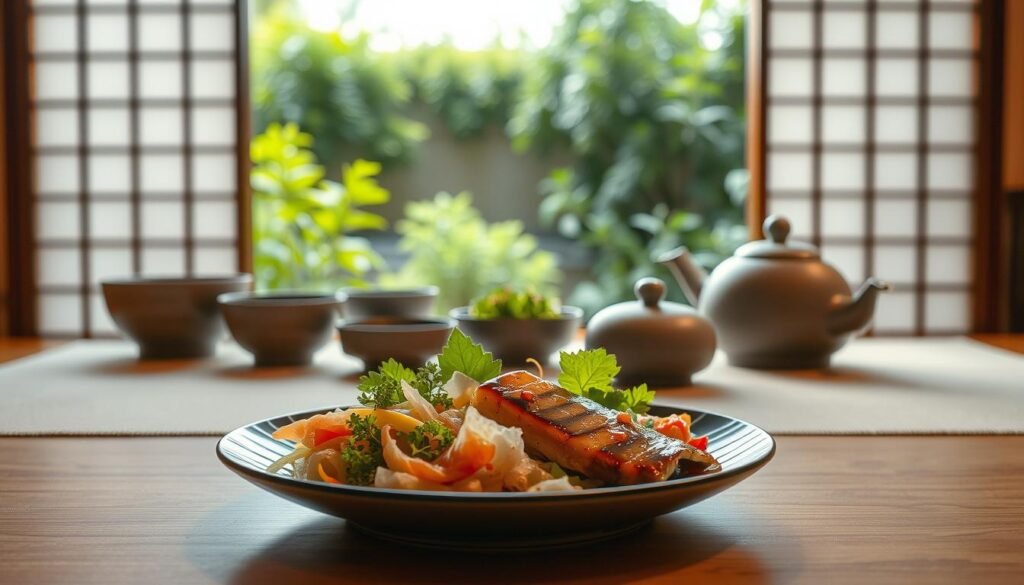
“We’re not just cooking, we’re translating heritage into new dialects of taste,” says Chef Hiroshi Tanaka of Arima no Mori. He makes a dish with miso-marinated trout and wild herbs that will amaze you.
Innovation Meets Heritage in Modern Kitchens
Chefs like Tanaka mix global styles with fresh ingredients. A dish that stands out is koshihikari rice risotto. It is creamy but also has a nice texture, shows the grain’s quality.
They also use modern techniques with local foods. For example, they make sea urchin foams. These innovative Japanese chefs make sure every dish respects tradition while exploring new ideas.
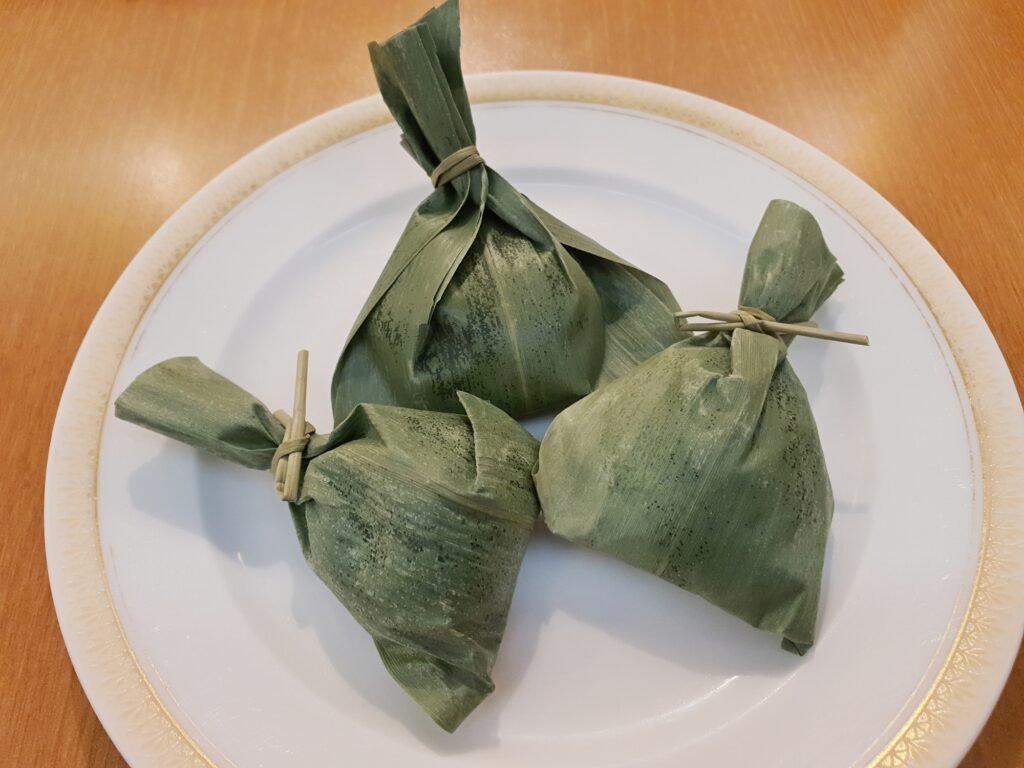
Japan Niigata Prefecture Sasadango. This Is A Specialty Of This City. Made From Mugwort With A Fillings Of Sweet Red Bean Paste.
Restaurants Leading the Culinary Evolution
| Restaurant | Innovation Highlight | Signature Dish |
|---|---|---|
| Arima no Mori | Edomae sushi with foraged forest ingredients | Pine-smoked mackerel with yuzu gelée |
| Umi no Oto | Sous-vide fish paired with heirloom rice varieties | Crab-and-chestnut koshihikari onsen tamago bowl |
These modern Niigata restaurants show that Japanese culinary innovation is a celebration, not a rejection. At Tsukiji Niigata, you can try tempura batter with matcha. Its a mix of Kyoto’s tea culture and coastal tastes. Each dish here honors Niigata’s past while looking to the future.
How to Plan Your Own Gastronomic Adventure in Niigata
Starting your Niigata food travel means understanding the land’s rhythm. Your journey shows you that timing is key. Visit during peak seasons like spring for bamboo shoots or autumn for the first rice harvest. Here’s how to plan your trip:
- Seasonal Timing: Visit during peak seasons. Spring has mountain veggies, autumn brings new rice and festivals. Winter is great for hot springs and kaiseki feasts.
- Transport Mastery: Take the Joetsu Shinkansen to Niigata City. Then, rent a car to see rural rice fields and coastal fisheries. Local buses connect places like Sado Island and Joetsu.
- Lodging with Flavor: Stay at family-run ryokan for local kaiseki. The Best Food Experiences Niigata often happen in these cozy spots. For example, Harukaze in Ojiya serves meals with wild mountain herbs.
- Reservations & Guides: Book early for top spots like Yumebotan in Tokamachi. Use Niigata Tourism’s English app for reservations. Hire local guides like Sakura Culinary Tours for help and insider tips.
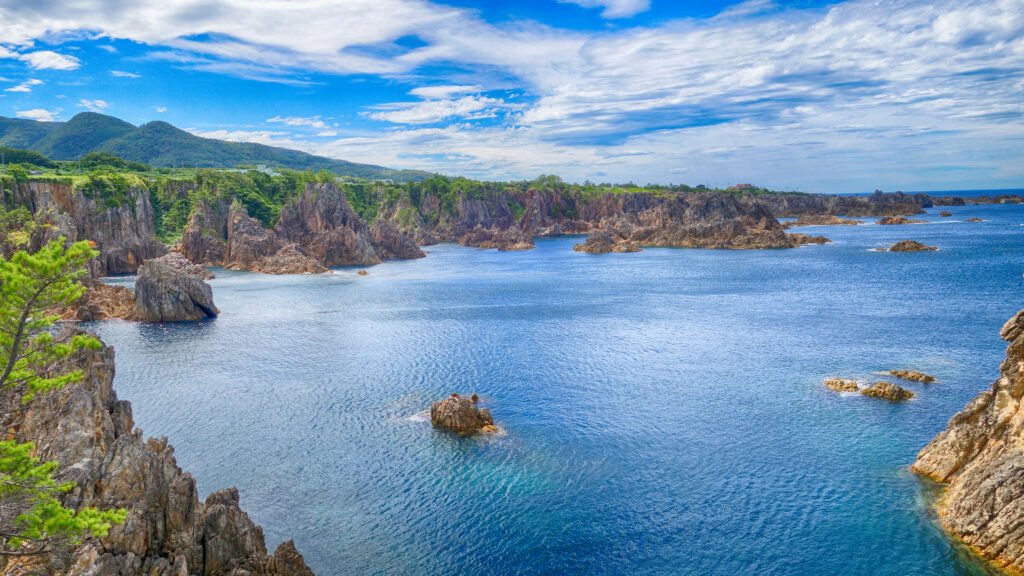
Sea View From Hill At Sado Island Niigata Japan
| Season | Culinary Highlights | Best Experiences |
|---|---|---|
| Spring | Mountain vegetables, sakura shrimp | Join bamboo shoot foraging hikes |
| Summer | Freshwater eel, early rice shoots | Visit Uonuma’s morning fish markets |
| Autumn | New harvest rice, matsutake mushrooms | Attend the Ojiya Koshihikari Festival |
| Winter | Preserved seafood, hot springs cuisine | Stay at Yuzuya Ryokan for winter kaiseki |
For Japan culinary tourism, focus on hands-on experiences. Press sake at Yamatogawa Sake Brewery or learn miso fermentation in Mikuni. Pack light but bring a rice cooker bag for souvenirs like Koshihikari grains or pickled sardines. Let curiosity lead you, Niigata rewards those who explore its rhythms.
Conclusion: Why Niigata Deserves a Place on Every Food Lover’s Bucket List
Niigata’s food scene is a must-see for anyone who loves Japanese cuisine. It’s known for its Koshihikari rice and fresh seafood. But it’s more than that. It’s the heart of culinary tourism Japan at its best.
Every grain of rice has a story. Each market stall beats with tradition. If you’re looking for Japanese food destinations that go beyond the usual, Niigata is a treasure trove of connection.
Exploring Niigata’s rice fields and sake breweries shows you a place where realness shines. The Niigata food culture is alive and growing. Chefs mix old traditions with new ideas, like modernizing ozoni soup.
Visiting family-run mills and dawn fish markets teach you about authentic Japanese culinary experiences. Niigata’s commitment to quality is unmatched. From the first rice harvest to the last sip of sake, it’s all about excellence.
While Tokyo is all about convenience, Niigata is a hidden gem. It’s where food meets land and artisan. It’s a place where patience and passion are key. For those who want to truly experience Japan’s culinary soul, Niigata is a must-see.

